In the very first battle of the world, Odin of the Aesir threw a spear over the heads of the opposing Vanir as the warriors stood, arrayed for battle, ritually commencing the war between the two god-clans. In homage to this, the Norse would throw a spear before battle – beginning the hostilities and ultimately foretelling the defeat of their foes.
Though the sword carries a weighty distinction to the Norse, we today give an over-emphasis on the importance of the sword to the Vikings. True, swords were greatly valued and imbued to the hilt with symbolism and magic, but they were comparatively rare to the axe and the spear – the work-a-day weapons for the majority of the Vikings. Though swords were carried by the wealthy, the spear was not just a poorer mans weapon, it was highly regarded, for Odin himself fought with the great spear Gungnir. Many spears were crafted with the same skillful pattern-welded steels seen on the seax and swords and some show evidence of artfully crafted decorative inlay with precious metals
The spear was one of the most common of Viking weapons, for it was the most versatile to a changing situation; When wielded well, the spear was a good weapon in single combat and it was the most important weapon for a battlefield. When Viking warriors locked their shields together in their typical shield wall formation, their spears would be held out like the quills of a hedgehog, keeping the enemy at bay and lashing out like the serpents tongue to bleed the foe.
The spear was long enough that warriors behind the first rank in the shield wall could thrust their spears out from behind their comrades, lending their weight into the combat. Alternatively, they could also throw the spear to deadly effect. The 13th century Norwegian battle manual, the Konungs skuggsj(Kings Mirror) states that a single spear in the battle line is more effective than two swords.
If the shield wall disintegrated in the chaos of the fight, the spear holds a first strike advantage in single or small group fighting. It is a surprisingly quick weapon, and if wielded well it can keep striking at the face, legs and shield edges of an opponent, keeping him on the defensive – a good weapon for a quick and cunning warrior. So long as the spearman keeps his foe at range he has the advantage, but should the swordsman or axeman get past the spear head with a timely dodge or deflection, then the spearman finds himself disadvantaged, and may have to give ground or, if quick, drop the spear for a sidearm.
Crafty Vikings could also use the spear for devious purposes, as some were known to use a combination of several spears and a shield to create a raised platform that men could use to give them the height to vault over a palisade wall and into a foes fortification.
The spear is a deceptively deadly weapon, for though it lacks the long blade edge of the sword or the cleaving powers of the axe, the spear is a thrusting weapon, and thrusting wounds, while less impressive than slashing or cleaving blows, are often more deadly. Spear wounds can strike deep, often hitting vital organs and creating deep wounds with large amounts of internal bleeding that is difficult or impossible to dress and treat. The long shaft not only gives the spearman reach, but its mass and leverage ensure that the strike hits with substantial force.
This Hanwei Lugged Viking Spear has a long steel spear head mounted onto a long wooden shaft and capped with a blunt, tapered, steel cap. The spear head is unsharpened.



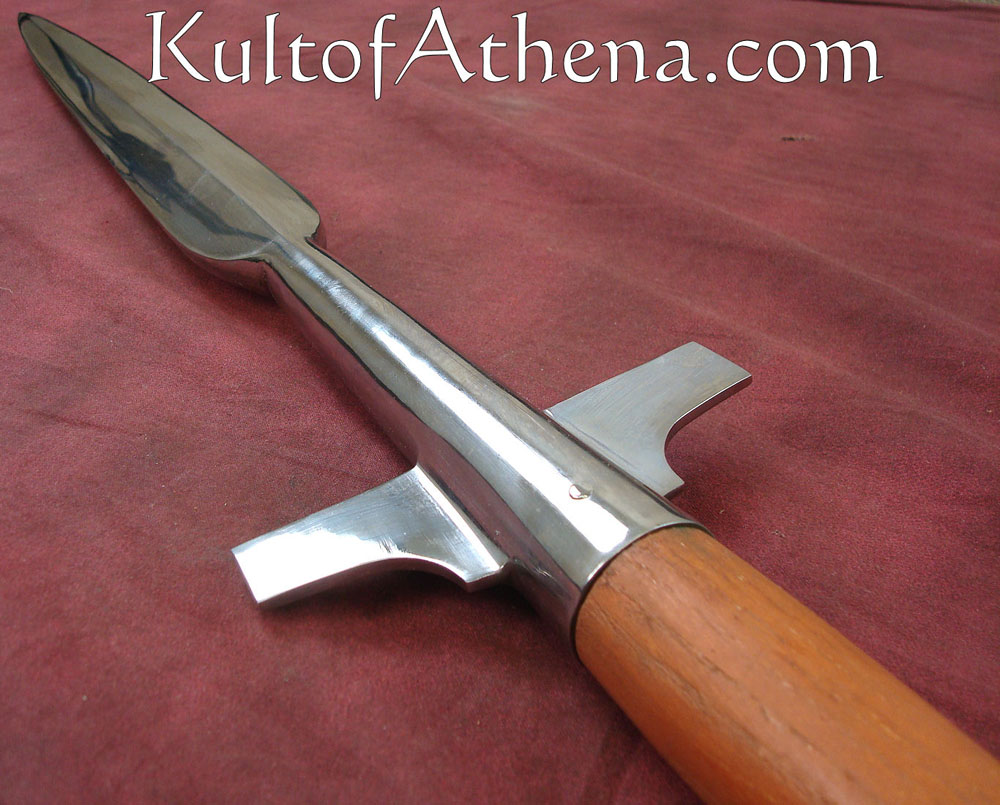

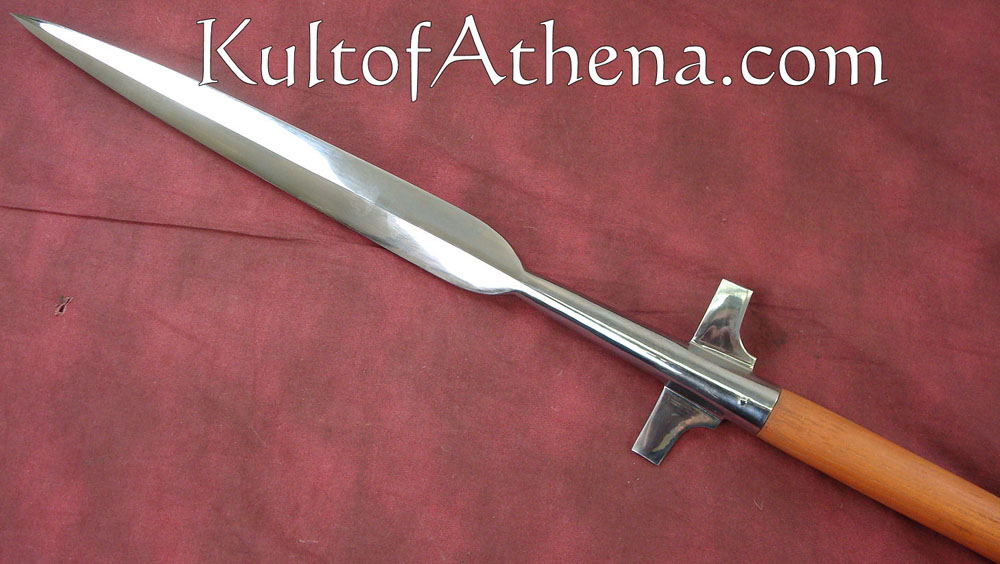
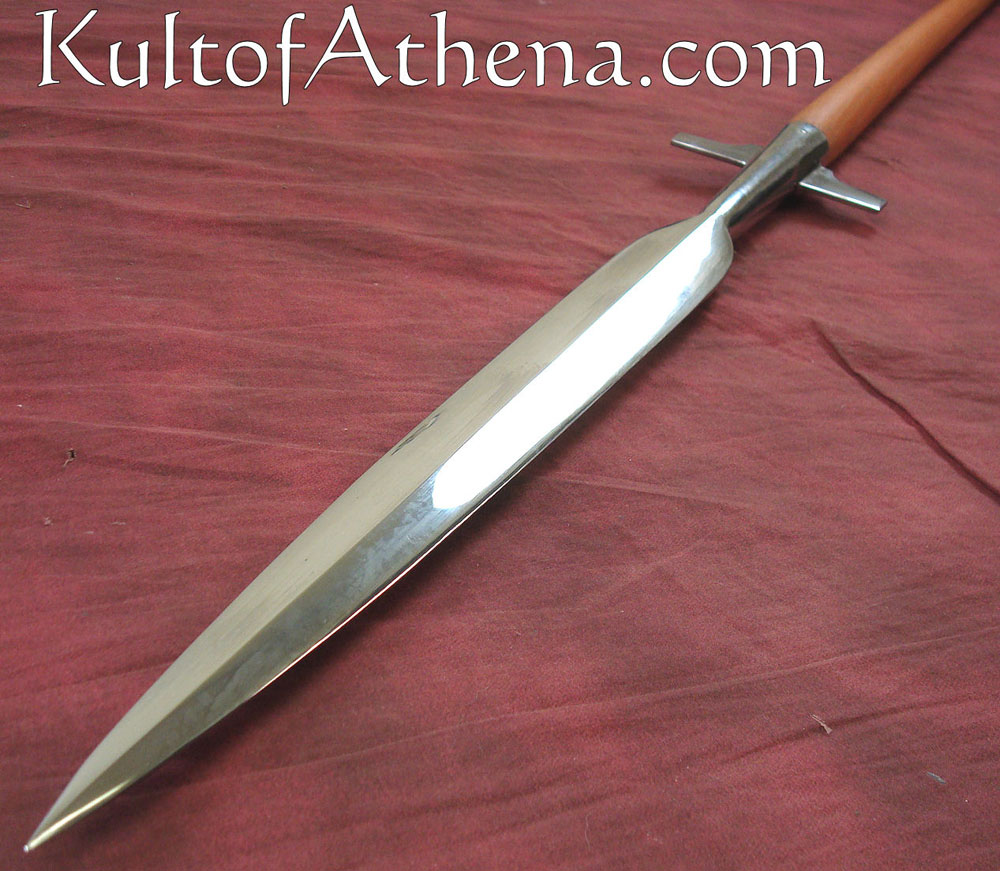
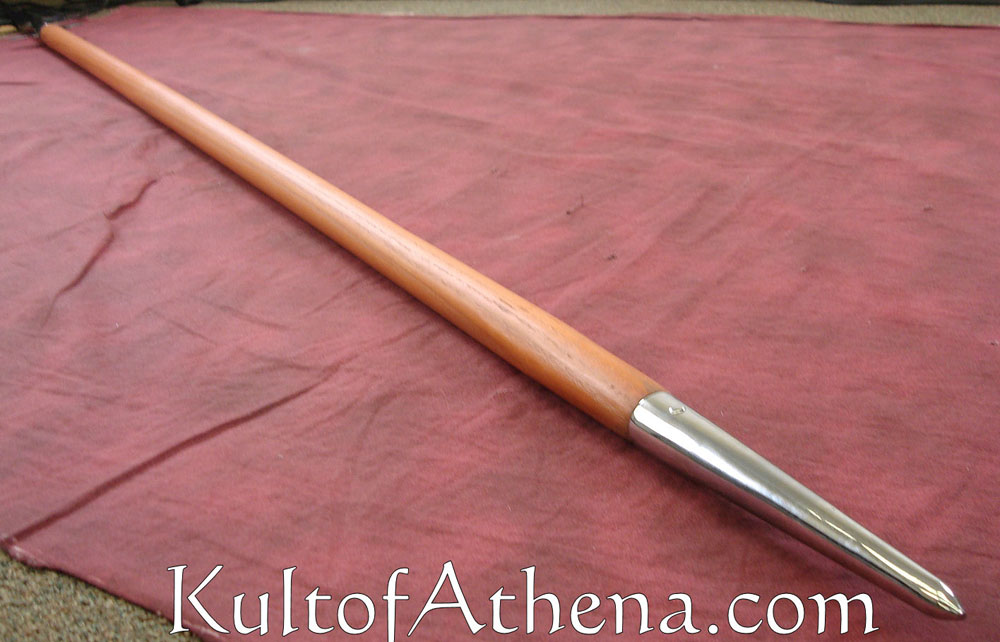


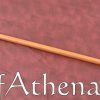
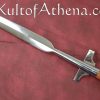
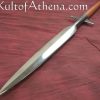
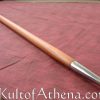
Matthew –
Great for the price The spear overall is very nice. The head and tail pieces came very tight fitted. Only complaints are the tip of the spear head was bent or curled on the very end, which may have happened in shipping, and there was a weird gpue or residue on the blade that had to be polished off